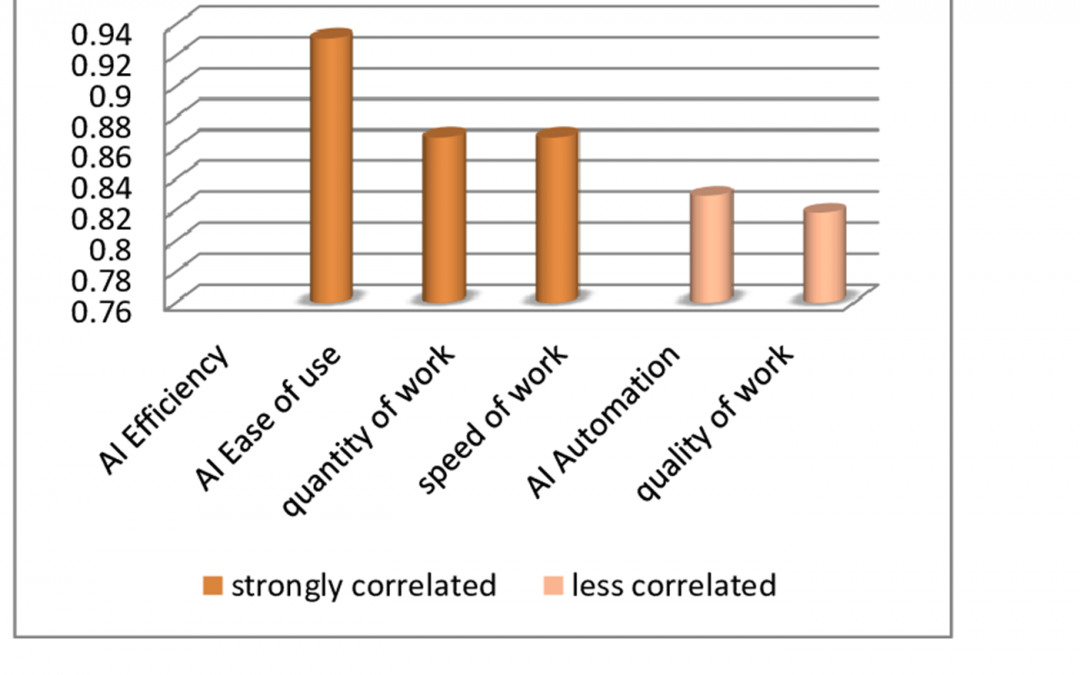
by Art Waskey | Apr 9, 2025 | Art of Sales Weekly, Featured
Personnel issues, if left unaddressed, can create chaos and derail business operations. Remember, when working with others, there are no absolutes. You need to organize principles and solutions to meet needs.
Here are four ways to organize solutions.
- Delegate responsibility – In his ground-breaking book, The Effective Executive, Peter Drucker points out the mark of a successful leader is his ability to “use all the available strengths: the strength of associates, the strength of supervisors, and one’s strength.” Delegating responsibility is an opportunity to develop team members by challenging them to grow their skills.
- Maintain a proper balance – To achieve workplace balance, it’s important to cultivate self-awareness and understand your needs and limits. Balance involves moving past doing the things we know we can do and moving toward new levels. When I consider balance, the acronym SMART comes to mind: Specific, Measurable, Achievable, Relevant, and Time-bound. This framework helps me create clear and effective goals.
- Make planning a team effort – In Sharpening the Focus of the Church, Gene Getz urges us to “take an approach to problem-solving and decision-making that takes into consideration the attitudes and feelings of all those who are directly involved.” Before enacting a plan, communicate your idea to the people responsible for its implementation. You may find the need to make revisions. You want to be sure all those involved with a plan’s implementation are motivated. Make it a team effort.
- Solve problems creatively – Don’t allow yourself to get locked into administrative methods and routines. Circumstances vary with each problem and solution. Be creative, expect alternative options, and solicit suggestions.
Still in the people business
No matter how digitized our lives are becoming with technology, we are still in the people business. Keep the implementation of your personnel strategies as simple as possible. Delegate responsibilities fairly, maintain workforce balance, make planning a team effort, and by all means, be creative!
Get tips and tricks like the above in The Art of Sales books. Or subscribe to the FREE monthly articles here.

by Art Waskey | Mar 25, 2025 | Art of Sales Weekly, Featured
Keeping your business on track with good people management
As an executive sales manager, I found that many work-related problems I encountered did not originate from business economics but from personnel issues. As organizations grow and develop, staffing needs change. To keep your business on track, you must get serious about good and fair people management.
Three guiding principles
Creative problem-solving takes moments of reflection. It focuses on developing new perspectives and fostering creativity. These three principles, whose basic conscript comes from Gene Getz’s Sharpening the Focus of the Church, are a good way to start.
Principle 1: Deal with people’s problems – Look at complaints as an opportunity for growth in a relationship. When a fellow worker or customer is upset with you, address the issue immediately. With effort, you can turn a bad situation into a good one. But also, if we ignore problems, they may overwhelm us.
Principle 2: Develop a proper perspective – Accept the fact that you may need help in solving problems. In his book, Who Not How, Dan Sullivan advises that seeking the assistance of someone qualified outside your organization saves time and grief. Also, asking for help is a sign of strength, not weakness,s and people find satisfaction in helping others solve problems.
Principle 3: Establish priorities – Have your priorities clearly mapped out. This allows everyone to recognize company expectations and avoid conflicts of interest. In my program, The 4 Disciplines of an Organized Executive, I teach people how to prioritize the next steps for important projects every week. This eliminates wasting time figuring out your next move and provides a clear path of action for your team.
Stay on track
Lastly, people are your most important asset. Be sure to take their management seriously. As staffing needs change, address problems as they arise, seek outside help as needed, and establish a clear set of priorities.
Get tips and tricks like the above in The Art of Sales books. Or subscribe to the FREE monthly articles here.

by Art Waskey | Mar 19, 2025 | Art of Sales Weekly, Featured
With the latest technology, you can streamline operations, improve customer service, and stay competitive in today’s market. Using automation tools has become increasingly important to achieving that goal.
Automation inside the shop
Fastenal, a large US distributor of industrial and construction supplies, has led the way in supplying vendor-managed inventory (VMI) at customer locations. VMI systems utilize advanced technologies to simplify inventory replenishment and track necessary products. These systems improve supply chain efficiency, foster collaboration, and drive predictability for both supplier and customer. Moreover, with omnichannel capabilities, the customer receives the best product at a competitive price. The traditional independent distributor should now work with a VMI equipment manufacturer to remain competitive.
Automating the warehouse
While VMI is improving inventory management for customers at the front of the store, inventory control costs behind the scenes at the warehouse are also improving with automation. In a recent article in Gasworld, Anthony Wrighton writes, “Drones, robots, and virtual reality might have sounded like science fiction a few years ago, but in industrial operations, they’re becoming everyday tools. With drones reducing inspection risks, robots taking over dangerous manual tasks, and VR transforming training… one thing is clear, digital transformation isn’t just coming, it’s already here.”
By deploying warehouse automation, distributors can reduce storage capacity by up to 35% and accelerate order fulfillment. Customer satisfaction is enhanced by accurate and timely deliveries. Be sure to take advantage of automation tools in your warehousing operations.
Stay competitive
In conclusion, stay competitive with automation in 2025. Streamline operations and improve customer service with automation tools both in front of and behind the sales desk.
Kim Phelan writes in the MDM Guide: Tailor Your Tech Strategy to Win in Any Market, “Customer experience is still the name of the game…” Automating while retaining customer loyalty can be complicated. Use resources like industry associations, cooperatives, and consultants to help you select the right tools for your needs.
Get tips and tricks like the above in The Art of Sales books. Or subscribe to the FREE monthly articles here.

by Art Waskey | Mar 13, 2025 | Art of Sales Weekly, Featured
Things are changing fast. Virtual online channels are raising the bar for efficiency in distribution. Customer expectations are becoming more demanding, requiring fast fulfillment, real-time inventory visibility, and highly personalized service. Legacy distributor systems cannot meet these demands. If the independent distributor is not collecting real-time data with up-to-date technology, the gap between his business and alternative channels may soon become insurmountable.
Three tools
Here are three tools that can help you meet customer expectations in 2025
1. State of the art ERP
Enterprise resource planning (ERP) is the foundation upon which you build your digital business. ERP software streamlines and automates functions such as finance, human resources, manufacturing, supply chain, and procurement. This tool is designed to help you keep up with growing customer demand for fast, reliable service. It is important to note that the number of features these systems offer is growing at a fast clip. Stay current!
2. Real time price
In the past, business economics taught us the best way to improve profit was to grow your sales. Technology, however, has opened up other avenues to improve your margins. With today’s software you can increase profits with real-time pricing. You can ensure opportunistic buying decisions, systematically raise prices, control sales force pricing, and capitalize on supplier price increases. Moreover, the challenge in 2025 is to provide tailored, competitive pricing with better profit margins while keeping customer loyalty.
3. Predictive forecasting analytics
Today’s AI forecasting software is capable of mining data through predictive modeling and machine learning. AI can analyze historical facts to make predictions about future events. Using various tools and techniques, business predictive forecasting models are available for sales, cost, and profits. Generative AI predictive business software such as Microsoft Copilot, IBM Project Ripasso, and Oracle Analytics, are just a few of the products available for distributors.
Meet Expectations
In conclusion, don’t let the gap between you and your online channel competitors widen. Use the latest ERP and AI solutions to meet customer expectations in 2025.
Get tips and tricks like the above in The Art of Sales books. Or subscribe to the FREE monthly articles here.

by Art Waskey | Feb 25, 2025 | Art of Sales Weekly, Featured
Business expansion should always be a topic for discussion. Branching out can be an excellent way to grow, but it represents a significant investment and requires careful thought and analysis. If you are considering branching out, here are four key factors to consider.
Considerations
- An ideal location – I’ve seen cases where a distributor’s decision to expand to a new geographic location was based on the availability of prime property. While a desirable site is important, this is not your only geographic consideration. Look for sites that attract customers with easy access and sufficient parking. Also, a site that accommodates foot traffic can make a big difference. In addition, your market analysis should include an evaluation of customers currently coming to one of your existing stores that may be better served from the potential location.
- Investigate local regulations – There’s a lot of paperwork associated with a new branch. Don’t forget to do your due-diligence to secure permits, licenses, and registrations from local authorities. Investigate area zoning laws and building codes. I have had clients who did not engage with local authorities early in the branch expansion process. They were frustrated by substantial construction-start setbacks while they waited for permitting and approvals.
- Employment growth – Do you have employees that are ready and looking for the next opportunity? Before opening another location, think about your current team and how they fit into your business expansion strategy. Is your core support talent (administration, operations, and finance) encouraging you to expand?
Some of my clients have opened a new location because a competitor had several qualified but disgruntled key employees ready to jump ship. Are you getting job applications that are attracting you to open at a new location?
- Financial opportunity – Do you have the revenue, profits, cash flow, and financing to support your business expansion strategy? Also, a business that isn’t consistently growing will potentially fail. Are you deploying your profit-producing assets by making acquisitions or adding more facilities? Your financial capacity should drive your investments and be a key part of your long-term growth plan.
Ready to grow
Adding new branch locations is a continuous consideration for a successful business. It requires disciplined planning and timing for maximum growth. Lastly, if you have the right location, staffing levels, and revenue to support a new branch, you are ready to grow.
Get tips and tricks like the above in The Art of Sales books. Or subscribe to the FREE monthly articles here.

by Art Waskey | Feb 19, 2025 | Art of Sales Weekly, Featured
Central to any good business plan is the possibility of expanding. I am working with a distributor who asked me to advise him on adding a new branch store. When I was part of a distributorship’s executive team we often met to discuss adding more locations. We found that careful research was critical when considering expanding.
Distinctive challenges
Each business presents its own distinctive challenges when looking to expand. Here are some important factors to consider before opening a new branch.
- New market potential – A new location often is proposed by an existing customer, or a new potential client. They indicate a willingness to do business if you have a store nearby. For example, a company running a large long-term construction site or a new manufacturer may be interested in your goods and services if they are readily available. In many cases, distributor vendors and other local businesses will request and encourage penetration into the new market as well. Consider these collaborators when doing your market research for the potential site. A new branch is a large investment. It is advisable to hire a consulting company that does data development for your industry to define all potential customers in the new area.
- Identify competition – Strong distributors do regular strength, weakness, opportunity, and threat (SWOT) analysis of their competitors. Does a weakness in product availability, service levels, and/or other customer marketing analysis indicate a significant opportunity for your business? An important part of a business expansion strategy is identifying your competition in a new target market. Continuously monitor your competitors’ activities and adapt your marketing strategies in ways that will differentiate you in this new market.
- Expanding your best business practices – I have clients who have invested in the digitalization of their business with progressive ERP, eCommerce, product identification, sophisticated websites, and other software advancements. Since these practices are transferable, they can be employed in new locations. The distributorship I worked for realized its information technology development was considerably better than our competition’s. Our digital efficiency with best business practices allowed us to expand our locations and market reach successfully.
Considerations
Growing your business is important to success. Adding a new branch location is an effective way to do that. When considering a new branch location, research its market potential and competition. Use your digital tools to make your expansion as efficient as possible.
Get tips and tricks like the above in The Art of Sales books. Or subscribe to the FREE monthly articles here.

by Art Waskey | Feb 11, 2025 | Art of Sales Weekly, Featured
Ease, Efficiency, and AI
It’s hard to underestimate the power of AI. It is adding another layer of sophistication to the digitally transformed world. By enabling businesses to analyze data quickly, AI allows companies to offer their products and services more easily and efficiently.
Improving the bottom line
Here are four ways AI can help you improve your bottom line.
- Accelerating Continuous Improvement (CI) – Generative AI enables companies to accelerate their CI planning. It is an agent for constantly improving specific repetitive tasks. AI can also, analyze performance metrics, identify areas of improvement, and make necessary adjustments to enhance business operations.
- Revolutionizing Sales – The digital transformation has revolutionized the sales process. A salesperson can now present to multiple decision-makers. In preparation for those calls, Generative AI can provide insight into customer needs and each participant’s interests. For instance, this informed machine learning process changes the salespersons’ posture toward customer needs from reactive to proactive. Ensure your sales team is adept at using AI’s powerful sales tools.
- Creating strategic business plans – AI Smart Analytics uses Application Performance Management (APM) software. Also, it can create a single integrated digital thread across a company’s whole asset life cycle. This enables your entire executive team — from CEO to finance, operations, sales, and marketing managers — to have insight and input into your strategic business planning.
- Maximizing profits – The adoption of AI is accelerating rapidly. You must understand how the application of these tools impacts your bottom line. Moreover, a data-driven approach to sales and operations allows distributors to analyze their asset development for a maximum return on investment.
Ease and efficiency
The overarching goal of a successful distribution business is to provide products and services with ease and efficiency. Lastly, becoming more productive with AI tools allows you to grow and prosper. As the cost of entry to these tools continues to decline, the opportunities for improving your return on the investment are enormous. My advice — digitize as fast as you can.
Get tips and tricks like the above in The Art of Sales books. Or subscribe to the FREE monthly articles here.

by Art Waskey | Jan 29, 2025 | Art of Sales Weekly, Featured
The word is out – or I should say, its initials are — AI. AI is dominating discussions in distribution, from webcasts to conferences. It’s reshaping your industry—time to embrace it and stay ahead. Digitize as fast as you can.
The benefits of AI
Here are some of the important ways AI can sharpen distributor operations.
- Improving order entry — Progressive distributors, suppliers, and customers are already using functional ERP, eCommerce, and product content software solutions. A distributor’s current goal for customer-digitalized order entry should be at least 30% of sales. Moreover, that means about a third of your customers are placing orders without direct human interaction with your staff. Data collected via digitalized order entry enables AI applications to analyze customer order frequency, cross- and up-sell, and apply effective pricing trends.
- Streamlining order processing – With AI order processing can be completed using text, emails, faxes, PDFs, or even verbal commands. One software developer sells a system that uses OpenAI ChatGPT, Microsoft CoPilot, or Google Gemini to assist a salesperson using a cell phone. Also, it allows a seller to take a customer request, prepare a quote, and even place the order. Additionally, innovative digital developers will come to your company and train your sales, operations, and supply chain employees on their products. Many can have new software operational in a matter of days.
- Training new employees – As experienced employees retire, companies lose their wisdom and knowledge base. AI can provide deep learning by analyzing the skill set of experienced employees and then creating training materials from that analysis for new hires. Chatbots and virtual assistants can provide on-the-job training for each new work challenge encountered.
Digitize now—AI is revolutionizing sales and operational processes. Lastly, it is making it easier to target sales to customer needs. Don’t miss this train. Hop on board and digitize now.

by Art Waskey | Jan 22, 2025 | Art of Sales Weekly, Featured
The challenge
Life offers us ideas and opportunities in random ways which makes the ability to follow our passions challenging. Acting on them, however, is key to success and happiness. Here is the tale of three brothers who all set out in one direction, but followed their passions and ended up in new and rewarding locations.
The farmer
My youngest brother chose to follow his two older brothers and earn a degree in engineering. He enjoyed a successful career in that field but along the way he discovered other passions. While in his mid-forties, his company transferred him to Virginia where he found he could afford to buy acreage east of the Blue Ridge Mountains. There he built a large country house and started raising livestock, chickens, ducks, and other feedstock. Now in his early 70s, he and his wife, a retiring schoolteacher, have a successful farmstead. He even operates his own small slaughterhouse. Today, my brother and his wife feel they are finally focusing on their true passion — growing their farmstead business and teaching agricultural skills to others.
The communicator
I am the middle brother, and I followed my older brother into engineering. Early in my career, I discovered my talents went beyond math and engineering and centered on communicating. I was a natural salesman. I frequently attended programs where others were speaking. Interestingly, I often felt I should be the one speaking. In my 40s, I acted on that instinct, joined Toastmasters International, and earned a Distinguished Toastmaster Certification. In my 60s I earned a Master of Ministry degree in Evangelical Christianity. Today, I am a writer, public speaker, consultant, and pastor. When you act on your passions they bring you peace, enjoyment, and success.
The foodie
My older brother, the one who led us into engineering, enjoyed a lucrative career in that field. In his 50s, however, he gave it up to pursue his passion. He purchased a delicatessen and became an accomplished chef.
Act on your passions Life is short but the journey is long. Pay attention to what brings you joy along the way. Set achievement goals and act on your passions to find true success.

by Art Waskey | Jan 14, 2025 | Art of Sales Weekly, Featured
When you can follow your passions, success is never far behind. Yet acting on your passions is often a bit of a balancing act as life offers us ideas and opportunities in random ways.
Five considerations
Here are five things to consider when acting on your passions.
- Observe what stimulates you – As part of my job, I frequently attended programs where others spoke. Interestingly, I often experienced an anxious rush at these events and felt I should be the one speaking. Eventually, I acted on that instinct. I joined Toastmasters International and earned a Distinguished Toastmasters Certification. Pay attention to what stimulates you.
- Seek feedback and insight from others – Acting on your passions often generates compliments from associates and friends. Pay attention to what others appreciate about you and build on it.
- Consider where you spend your time – When you are not at work, pay attention to the activities that pique your interest. Consider what stimulates you when you are away from your 9 to 5 career.
- Take risks – I am working with a young client who is successful in sales but found greater satisfaction when he was working in a hands-on position. He thought his career progression into sales would bring him greater fulfillment. It did not. Today he is exploring another position in the company where he can use his natural skill set in technical support.
- Set goals and strive for them – As I progressed through a 50-plus-year career in sales management, I learned to recognize different outlets that were attractive to me. Acting on each of these required setting achievement goals. In addition to my Toastmasters certification, I also earned a Master of Ministry degree in Evangelical Christianity. Today, I am a writer, public speaker, consultant, and pastor. When you act on your passions they bring you peace, enjoyment, and success.
Act on your passions
Life is short and time is valuable. Now is always the right time to think about what brings you joy. Set goals, act on your passions, and find success.
Get tips and tricks like the above in The Art of Sales books. Or subscribe to the FREE monthly articles here.










